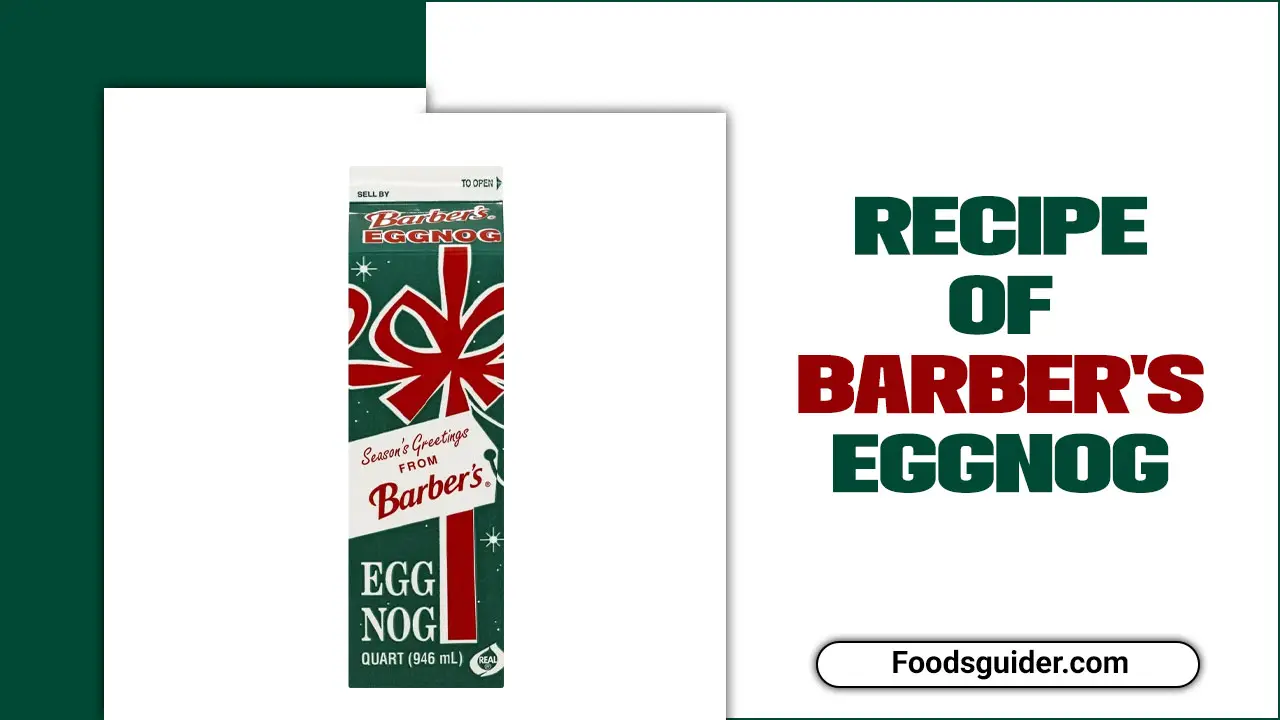Traveling doesn’t mean sacrificing delicious, home-cooked meals. Equip yourself with smart, compact cooking gear and master simple hacks to whip up flavorful dishes anywhere. From camping trips to hotel rooms, these essentials make portable cooking a breeze, proving that great food can always come with you.
Ever dreamt of enjoying a hot, home-cooked meal while on the road, only to be met with limited hotel kitchens or basic campsite amenities? It’s a common frustration for travelers who love good food but don’t want to rely solely on expensive restaurant meals or pre-packaged snacks. The good news is, you don’t have to! With a little planning and the right travel-friendly cooking gear, you can easily prepare satisfying meals wherever your adventures take you. This guide will walk you through the essentials and share some clever hacks to make cooking on the go simple, fun, and absolutely delicious.
Why You Need Travel-Friendly Cooking Gear
For many of us, food is more than just fuel; it’s an experience. Whether you’re exploring national parks, road-tripping across the country, or enjoying a budget-friendly vacation, the ability to prepare your own meals can significantly enhance your trip. It opens up a world of culinary possibilities, allowing you to:
- Save money by avoiding frequent restaurant visits.
- Control your ingredients for healthier eating or to accommodate dietary needs.
- Enjoy familiar flavors or experiment with local ingredients you find.
- Create memorable cooking experiences in unique settings.
The key is choosing gear that is lightweight, compact, durable, and easy to use and clean. Let’s dive into the essential items that will transform your travel cooking game.
Essential Travel-Friendly Cooking Gear
When packing for your culinary adventure, think multi-functional and space-saving. Here are the must-have items for your portable kitchen:
1. Compact Stove
A reliable heat source is fundamental. Several types of portable stoves are available, each with its pros and cons.
- Propane Camping Stoves: These are popular for their ease of use and sturdy construction. They typically run on disposable propane canisters and offer good heat control. Look for models with foldable legs and a windscreen for efficiency.
- Butane Burners: Smaller and lighter than propane stoves, butane burners are great for indoor use (like in an RV or a well-ventilated hotel room) or for very casual outdoor cooking. They use readily available butane fuel canisters.
- Alcohol Stoves: Extremely lightweight and simple, alcohol stoves use denatured alcohol as fuel. They are a favorite among backpackers for their minimal parts and quiet operation.
- Integrated Camping Cook Systems: Brands like Jetboil or MSR offer systems that combine a pot with a built-in stove for incredibly efficient heating, perfect for boiling water quickly for meals or drinks.
When selecting a stove, consider the fuel availability in your travel destinations. For instance, propane is widely available in North America, while other regions might favor different fuel types. Always check local regulations regarding open flames or cooking appliances.
2. Lightweight Cookware
Your pots and pans need to be durable yet light enough not to weigh down your pack.
- Collapsible Pots and Pans: Made from silicone or other flexible materials, these can fold down significantly, saving precious space.
- Nested Cookware Sets: Many camping cookware sets are designed to nest inside each other, with handles that fold or detach, creating a compact unit. Titanium or anodized aluminum are excellent lightweight and durable choices.
- Multi-functional Skillet/Pot: A single pot with a lid that doubles as a frying pan can be incredibly versatile.
Look for cookware with a non-stick surface for easier cleaning, especially when you don’t have access to a full sink. A good rule of thumb is to pack no more than you absolutely need. A small pot and a small skillet are often sufficient for most travelers.
3. Utensils and Gadgets
Think smart and multipurpose here.
- Spork or Multi-tool Utensil: Combines a spoon, fork, and sometimes a knife or bottle opener, reducing the number of items you need to carry.
- Collapsible or Detachable Handle Cutlery: Similar to cookware, these save space.
- Silicone Spatula/Spoon: Heat-resistant and flexible, these are useful for stirring, scraping, and serving, and they don’t scratch non-stick surfaces.
- Small Cutting Board: Opt for a thin, flexible plastic or bamboo board that can be easily cleaned and packed.
- Sharp, Foldable Knife: A good quality knife is essential for prep work. A foldable camping knife or a chef’s knife with a protective sheath is ideal.
- Can Opener/Bottle Opener: A multi-tool often includes these, but a dedicated, compact opener is also a good idea if you plan on using canned goods.
4. Water Container and Purification
Access to safe drinking water is paramount. Depending on your travel destination, you might need to carry water or purify it.
- Reusable Water Bottle: Essential for staying hydrated on the go.
- Water Filter/Purifier: For areas where tap water isn’t safe, a portable filter (like a Sawyer Squeeze or Lifestraw) or purification tablets can be lifesavers. These attach to bottles or allow you to drink directly from a water source, removing bacteria and protozoa. You can learn more about water purification through the CDC’s guidelines for travelers.
- Collapsible Water Bag: Useful for carrying larger quantities of water when needed.
5. Food Storage
Keeping your food fresh and organized is crucial for minimizing waste and ensuring safety.
- Reusable Food Containers: Lightweight plastic or silicone containers are great for leftovers or packing ingredients.
- Silicone Reusable Bags: These are more durable and eco-friendly than single-use plastic bags and can be used for both storage and even some light cooking (like sous vide if applicable).
- Small Cooler Bag: If you have space and plan on carrying perishables, a small, insulated cooler bag can make a big difference.
6. Cleaning Supplies
Maintaining hygiene on the go is as important as at home.
- Biodegradable Soap: Gentle on the environment and effective for washing dishes.
- Small Sponge/Scrubber: A compact scrubbing pad makes cleaning easy.
- Quick-Dry Towel: A small microfiber towel is perfect for drying dishes and can also be used as a hand towel.
- Trash Bags: For packing out food scraps and keeping your cooking area clean.
Travel Cooking Hacks for Beginners
Beyond the gear, smart techniques make all the difference. Here are some hacks to help you cook like a pro, even with limited resources:
1. Meal Prep Before You Go
This is arguably the biggest game-changer for budget and time-conscious travelers. Spend time before your trip chopping vegetables, pre-measuring spices, and even pre-cooking certain ingredients like grains or sauces.
- Portion Ingredients: Pack ingredients for specific meals in separate reusable bags or containers. For example, a bag with pre-chopped onions, peppers, and spices for chili.
- Marinate Meats: Marinate meats in zip-top bags. The marinade can help tenderize and flavor the meat as it travels. Just ensure it stays cool.
- Pre-cook Grains: Cook rice or quinoa at home and portion it out. Reheating is much faster than cooking from scratch.
2. Embrace One-Pot Wonders
To simplify cooking and cleanup, focus on recipes that can be made in a single pot or pan. This reduces the number of dishes to wash and the amount of gear you need to carry.
- Pasta Dishes: Cook pasta in one pot, then add sauce and pre-cooked/canned protein.
- Stir-fries: Sauté your pre-prepped veggies and protein in one pan.
- Hearty Soups & Stews: Perfect for a single pot and can be made with minimal ingredients.
3. Utilize Your Environment
Sometimes, your surroundings can be your kitchen assistant.
- Campfire Cooking (Where Permitted): If you have access to a campfire, aluminum foil packets are a fantastic way to cook vegetables, fish, or sausages. Just wrap your ingredients with seasonings and place them directly in the embers. Ensure you are aware of fire safety regulations for the area.
- Boiling Water for Dehydrated Meals: Many camping meal brands offer dehydrated meals that only require boiling water. This is the simplest way to have a hot, substantial meal with minimal effort. Brands like Mountain House or Backpacker’s Pantry are popular choices.
4. Smart Spice Management
Don’t underestimate the power of seasoning! A well-seasoned meal is a delicious meal, even when traveling.
- Spice Travel Kits: Purchase small, travel-sized spice containers or repurpose small cosmetic jars. Fill them with your most-used spices.
- Spice Blends: Create your own robust blends at home (like taco seasoning, Italian herbs, or curry powder) to bring flavor to any dish with just one or two additions.
- Oil and Salt: A small bottle of cooking oil and a container of salt are essential basics.
5. Leverage Your Vehicle (for Road Trips)
If you’re on a road trip, your car can be a surprisingly useful tool.
- Solar Oven: For warmer climates and sunny days, a portable solar oven can cook meals using sunlight. It’s a fuel-efficient and eco-friendly option.
- 12V Power Inverter: If your car has a power inverter or you can use one, you might be able to power a small electric skillet or slow cooker for longer stops. Always ensure your car battery can handle the load.
- Engine Block Heater (for long drives): Believe it or not, some travelers use a well-insulated container placed on the engine block of a car during a long drive to slow-cook meals. This requires careful research and appropriate food safety measures to ensure the food reaches safe internal temperatures.
6. Easy Cleanup Strategies
Nobody wants to spend their vacation scrubbing pots.
- Wipe Down Immediately: Clean your cookware and utensils while they are still warm. Food residue is much easier to remove before it hardens.
- Scrape, Scrape, Scrape: Use a spatula or spoon to scrape out as much food as possible before washing.
- Boil Water for Stubborn Bits: If food is stuck on, fill the pot with water and bring it to a boil on the stove. This often loosens residue for easier washing.
- Use Minimal Water: If water is scarce, use a damp cloth or paper towel to wipe down surfaces, followed by a light wash with soap and a rinse.
Travel-Friendly Cooking Gear Comparison Table
Choosing the right gear depends on your typical travel style. Here’s a quick comparison:
| Gear Item | Best For | Pros | Cons | Key Feature to Look For |
|---|---|---|---|---|
| Propane Camping Stove | Car Camping, RVs, Base Camps | Powerful, good heat control, widely available fuel | Can be bulky, fuel canisters take up space | Windscreen, foldable legs, multiple burners |
| Butane Burner | Indoor RV Cooking, Short Car Trips | Compact, lightweight, easy to use | Lower heat output, butane may be less available globally | Sturdy pot support, automatic ignition |
| Alcohol Stove | Backpacking, Ultralight Travel | Extremely lightweight, simple, very quiet | Slower to boil, wind-sensitive, fuel can be tricky to find | Integrated windscreen, efficiency |
| Collapsible Cookware | Backpacking, Space-Conscious Travel | Saves significant space, lightweight | Can be less durable, may not heat as evenly | Heat-resistant handles, tight-fitting lids |
| Nested Cookware Set | Car Camping, Longer Trips | Organized, all components fit together | Can be heavier depending on material | Titanium or anodized aluminum, integrated pot grabber (handle) |
| Multi-tool Utensil | All Travel Types | Reduces item count, very versatile | Can be less ergonomic than dedicated tools | Durable material (stainless steel), sharp knife edge (if included) |
| Water Filter Bottle | Hiking, International Travel | Provides safe drinking water on the go, eco-friendly | Filter lifespan, flow rate can vary | Pore size (microns), ease of use, filter replacement availability |
Sample Travel-Friendly Meal Ideas
With the right gear, you can enjoy a variety of meals. Here are a few ideas:
- Breakfast: Oatmeal with dried fruit and nuts, scrambled eggs with pre-chopped veggies, or breakfast burritos using pre-cooked scrambled eggs and canned beans.
- Lunch: Tuna or chicken salad sandwiches (using pre-cooked chicken/tuna), lentil soup (made from scratch or from a mix), or hearty salads with pre-cooked grains and a simple vinaigrette.
- Dinner: One-pot pasta with marinara and precooked sausage, stir-fried rice with mixed vegetables and soy sauce, chili made with canned beans and spices, or foil packet meals cooked over a campfire.
Maintaining Your Gear
Proper care extends the life of your cooking gear and ensures it’s ready for your next adventure. After each use:
- Allow cookware to cool before cleaning to prevent warping.
- Scrape out all food residue.
- Wash with warm, soapy water and a non-abrasive sponge.
- Rinse thoroughly and dry completely before packing to prevent mold and mildew.
- Check fuel canisters for leaks and store them properly.
- Ensure water filters are cleaned and dried according to manufacturer instructions to prevent contamination.
For a comprehensive guide on caring for outdoor gear, check out resources from outdoor recreation organizations like REI’s Camping Gear Guide, which often includes maintenance tips.
Frequently Asked Questions About Travel Cooking Gear
Q1: What’s the most important piece of travel cooking gear for a beginner?
A1: For most beginners, a reliable and easy-to-use compact stove is the most crucial. It provides the heat needed for almost any meal. A small pot or pan to go with it is a close second!
Q2: How do I choose between a propane and a butane camping stove?
A2: Propane stoves are generally more powerful and better for colder weather or cooking larger meals. Butane stoves are usually smaller, lighter, and simpler for basic tasks like boiling water or cooking small portions.
Q3: Can I bring my cooking gear on an airplane?
A3: This can be tricky. Empty fuel canisters are typically not allowed in checked or carry-on luggage. Stoves themselves may be permissible, but always check the specific airline’s regulations and TSA guidelines before flying. It’s often easier to buy fuel at your destination or opt for gear that doesn’t require specialized fuel.
Q4: What are the best travel-friendly pots and pans?
A4: Look for lightweight materials like aluminum or titanium that can nest or collapse. Non-stick coatings are a huge plus for easy cleaning. A versatile pot with a lid that can double as a pan is a great space-saver.
Q5: How much cooking gear do I really need?
A5: Start simple! A stove, a pot, a pan, a utensil, and basic cleaning supplies are often enough for most travelers. You can always add to your collection as you discover your specific needs and cooking style on the road.
Q6: What are some simple meal ideas that require no cooking?
A6: Shelf-stable options like trail mix, jerky, canned fish or beans (with a pull-tab), whole grain crackers, nut butters, dried fruits, and pre-made pouches of hummus or guacamole are great. Pair these with fresh items like apples or carrots for a balanced no-cook meal.







